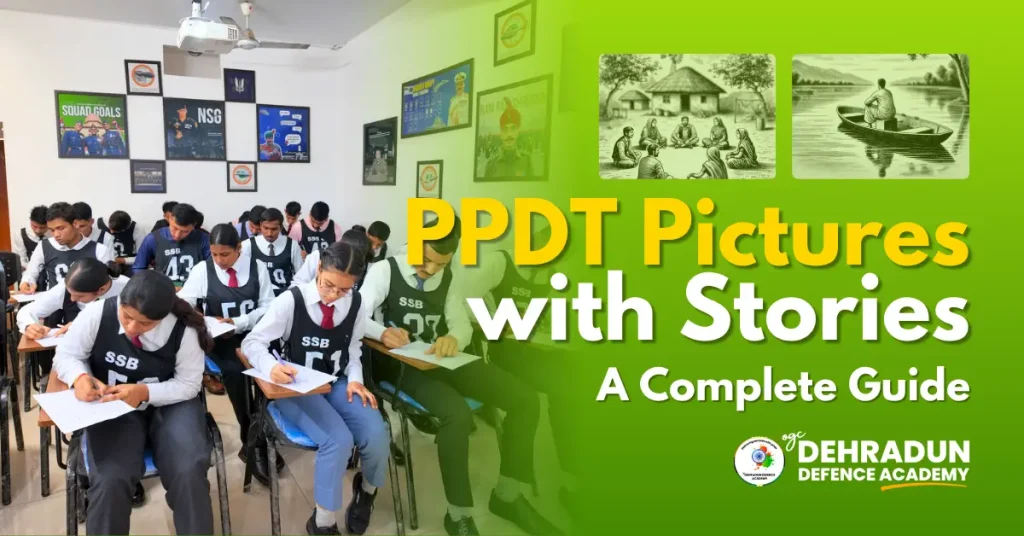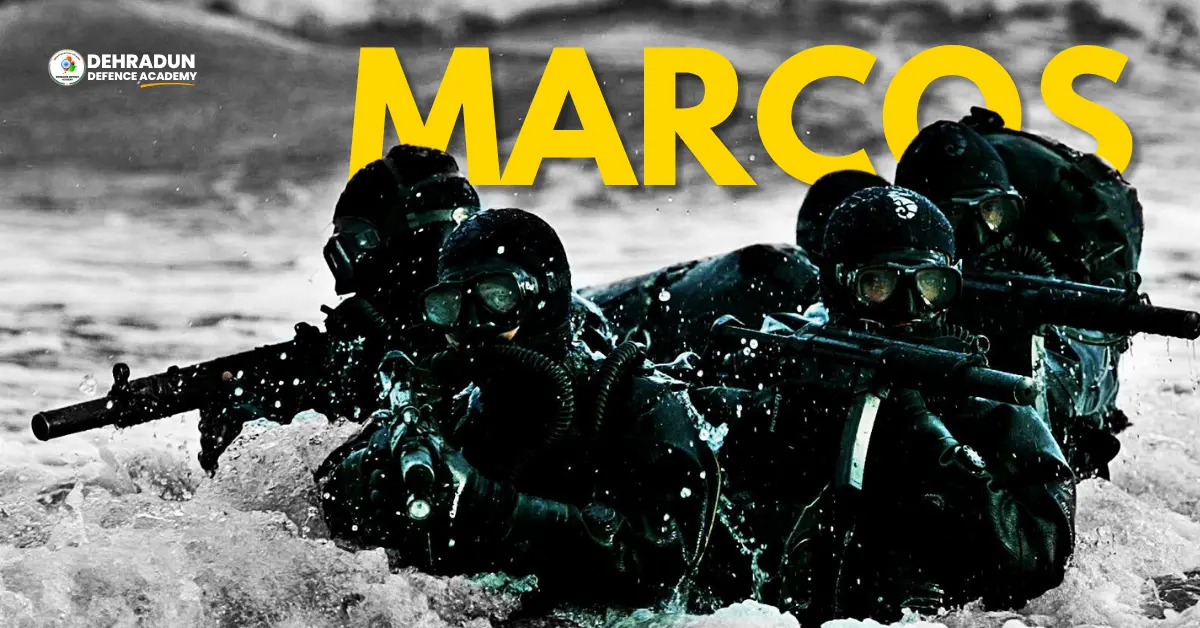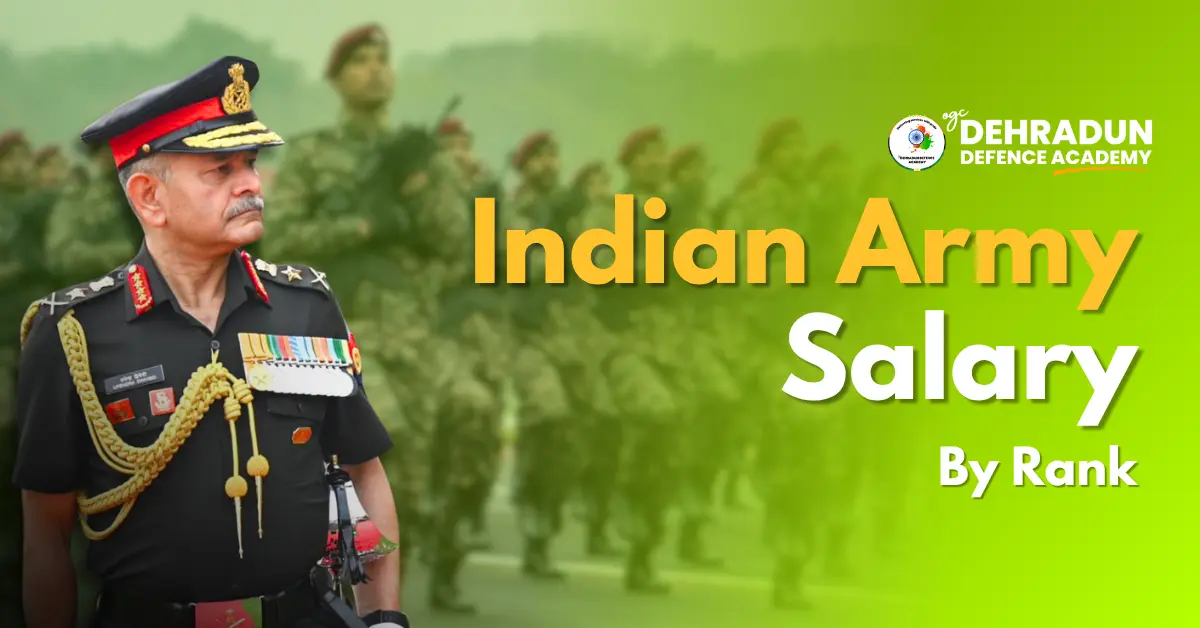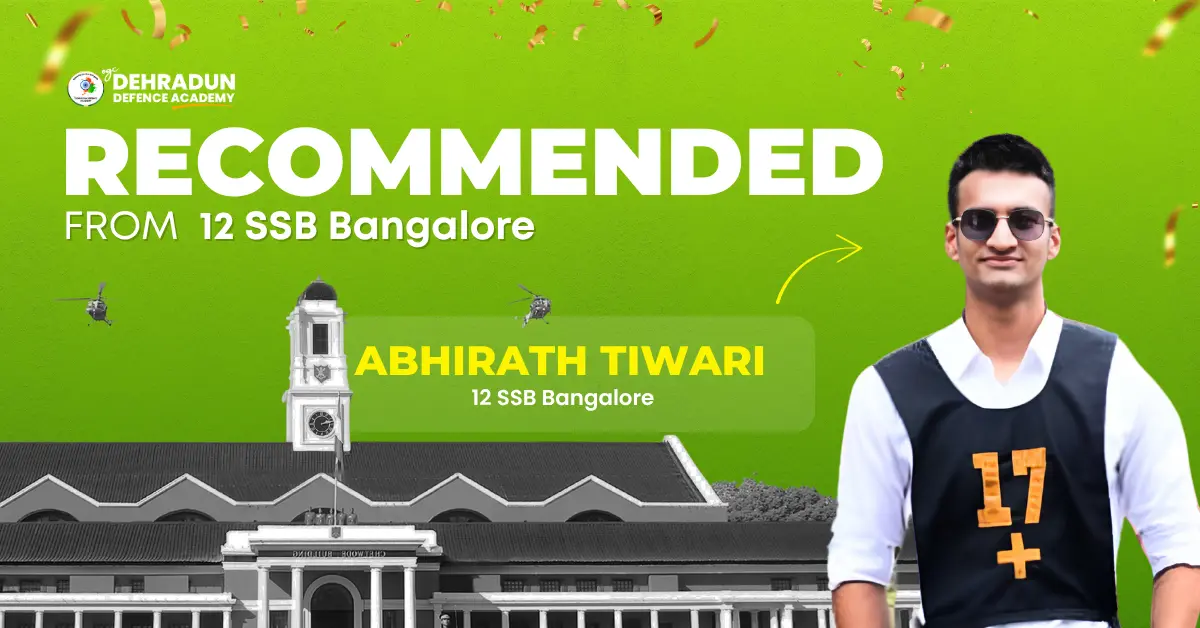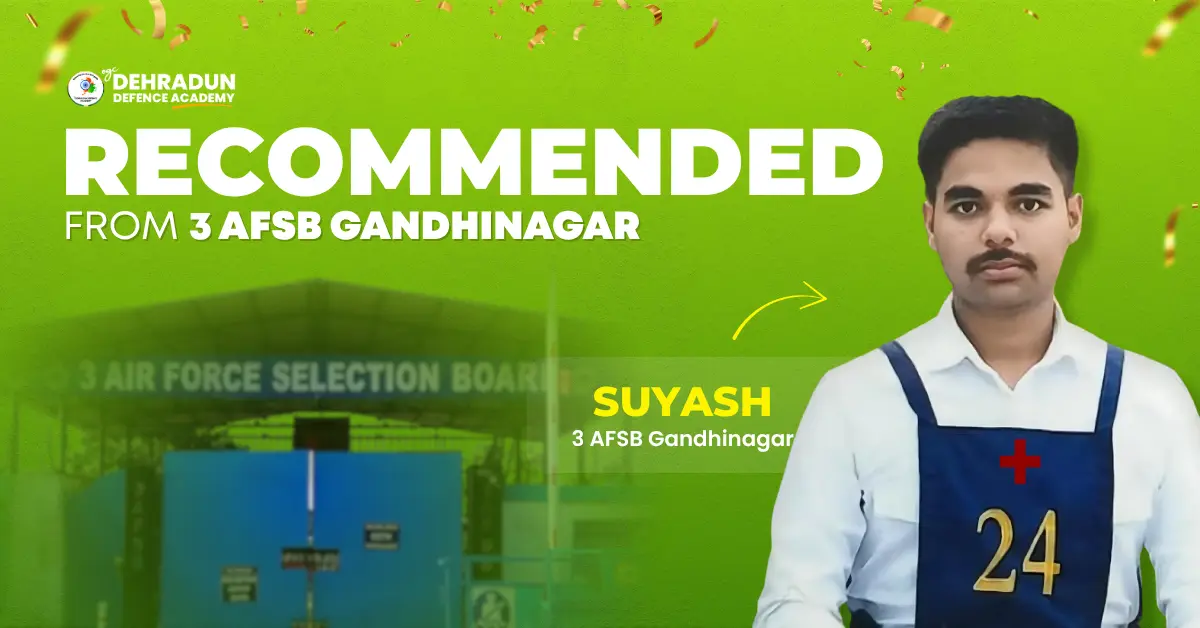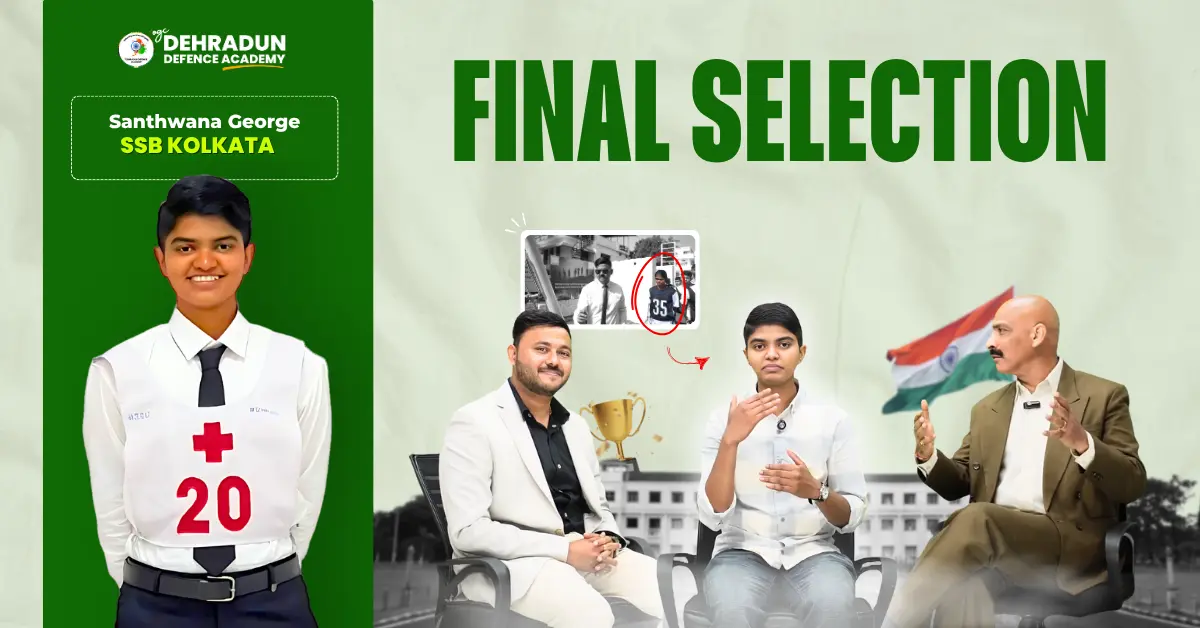The Picture Perception and Discussion Test (PPDT) is a psychological test. It is part of the Stage 1 Screening Test in the SSB interview. In this test, hazy PPDT pictures are shown to evaluates a candidate’s observation, imagination, and communication skills.
The PPDT evaluates a candidate’s observation, imagination, and communication skills. It also assesses leadership qualities and team participation.
It is designed to test how a candidate perceives a situation and how effectively they can express their thoughts. The test also checks a candidate’s ability to work in a group and influence others positively.
PPDT is one of the first tests conducted during SSB and helps in filtering out unsuitable candidates early.
The PPDT consists of two parts:
- Picture Perception
- Group Discussion
Picture Perception
In this part, a blurred or hazy picture is shown to the candidates for 30 seconds.
Candidates are asked to observe the picture carefully and write a short story based on what they perceive.
They have to note details like:
- Number of characters
- Age, gender, and mood of the characters
- What led to the situation (past), what is happening (present), and what will happen (future)
Candidates get 4 minutes to write their story on paper.
Group Discussion
After writing the story, candidates are divided into small groups of 10–15.
Each candidate narrates their story individually to the group.
Once all stories are narrated, the group discusses and tries to arrive at a common story.
This part tests communication, clarity of thought, confidence, and the ability to work in a team.
Main Objective of PPDT
The main aim of PPDT is to assess:
- Perception and imagination
- Mental alertness
- Communication skills
- Group behavior and leadership qualities
Candidates are not judged solely on their story but also on how they participate and contribute during the discussion.
Tips for PPDT Pictures with Stories
Some helpful tips for performing well in PPDT include:
- Observe the picture calmly and focus on the details.
- Make your story positive, realistic, and logical.
- Write clearly and avoid unnecessary complexity.
- Speak confidently during narration and discussion.
- Listen to others and help in forming a group story without being aggressive.
PPDT is a crucial part of the SSB interview process. It helps the assessors identify candidates who have the right mix of imagination, clarity, and leadership skills.
Performing well in PPDT requires practice, presence of mind, and a positive attitude.
10 Sample PPDT Picture with Stories
PPDT Pictures 1
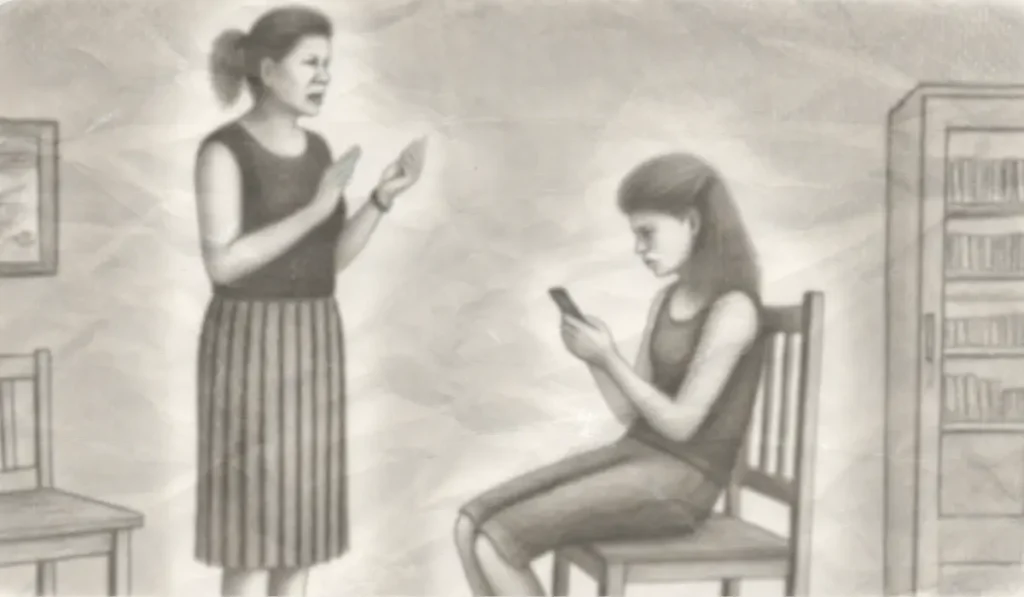
Guide: Choose the seated girl as the hero. Show her realizing her mistake after noticing her mother’s concern, taking responsibility for her actions, and resolving the conflict maturely with understanding and family values. End with a positive and realistic outcome.
Sample Story: Ankita, a 17-year-old student, was sitting at home, completely engrossed in her mobile phone while her mother stood nearby, visibly upset and trying to talk to her. Realizing that she was being disrespectful and ignoring her responsibilities, Ankita quickly put the phone aside, stood up, and apologized to her mother for her behavior. She then assured her mother that she would limit her screen time, focus on her studies, and spend more time with her family. Later that evening, she created a daily schedule balancing study, recreation, and family activities, which she showed to her mother. Her thoughtful and responsible approach made her mother proud and restored a cheerful atmosphere at home.
PPDT Pictures 2

Guide: Choose the seated man as the hero. Show him facing a personal or professional setback, analyzing the problem calmly, and finding a positive, practical solution. Highlight resilience, determination, and problem-solving qualities. End with a hopeful, realistic outcome.
Sample Story: Ravi, a 24-year-old engineering graduate, was sitting in his room, visibly worried after failing to clear a competitive exam he had been preparing for months. Instead of losing hope, he took a deep breath and reflected on his mistakes. He noted down the areas where he needed improvement, researched better study strategies, and reached out to a mentor for guidance. Over the next few months, he disciplined himself, stuck to a proper timetable, and worked hard on his weak subjects. His perseverance paid off when he successfully cleared the exam on his next attempt. Ravi’s determination to overcome failure and keep moving forward inspired his friends and family.
PPDT Pictures 3
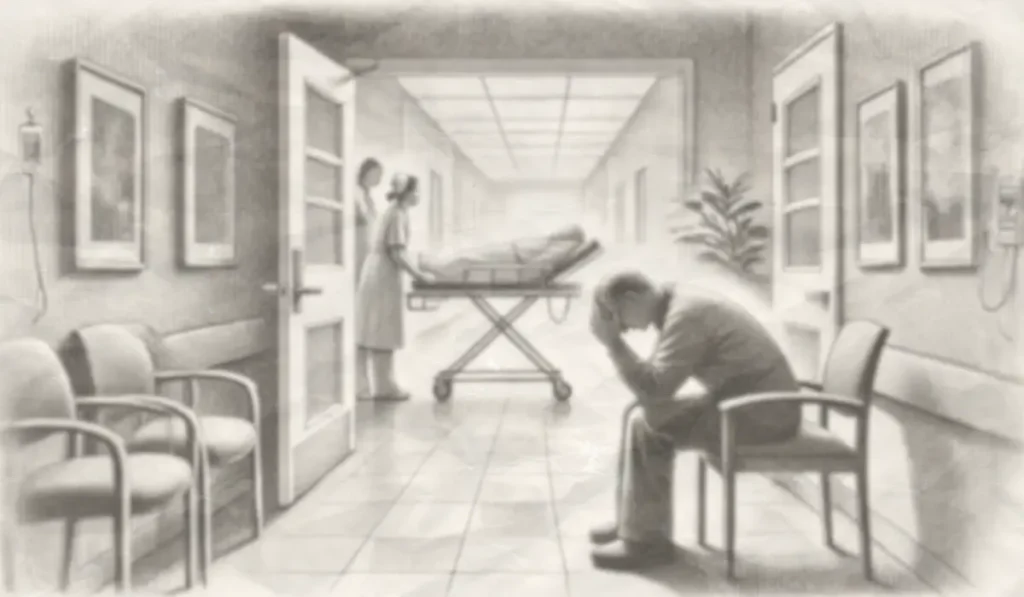
Guide: Choose the seated man as the hero. Show him initially worried about his loved one’s health but gathering strength, coordinating with doctors, and ensuring proper care. Highlight emotional strength, responsibility, and problem-solving. End with a hopeful, positive outcome.
Sample Story: Suresh, a 30-year-old office worker, rushed his father to the hospital late at night after he suddenly collapsed at home. Sitting in the waiting area, he was deeply worried as doctors attended to his father inside the ICU. Composing himself, Suresh stood up, spoke to the doctors to understand the situation, and arranged for the required medicines and blood tests immediately. He kept in touch with relatives for support and reassured his family members at home. Thanks to his quick action and presence of mind, his father stabilized and was shifted out of danger after a few hours. Suresh’s calm and responsible behavior in a critical moment won everyone’s appreciation.
PPDT Pictures 4
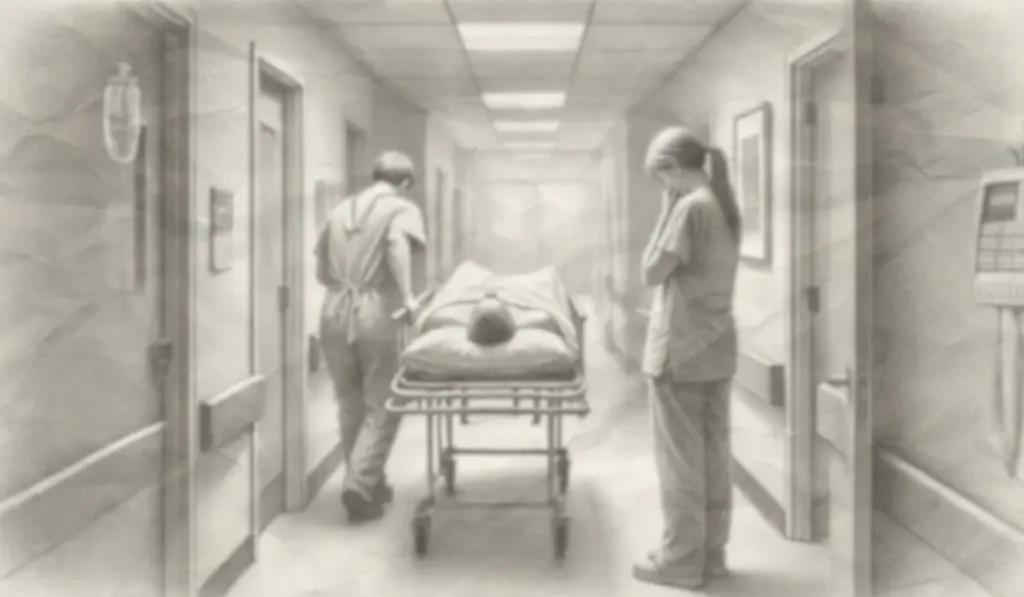
Guide: Choose the nurse standing at the side as the hero. Show her staying calm and composed during a critical patient transfer, supporting her team, and taking responsibility to ensure everything is handled smoothly. Highlight presence of mind, teamwork, and empathy. End with a positive and professional outcome.
Sample Story: Priya, a 26-year-old nurse, was on duty in the ICU when a critically ill patient needed to be shifted urgently to the operation theatre. As her colleague pushed the stretcher, she noticed the patient’s oxygen mask slipping and immediately fixed it while walking alongside, monitoring his vitals and reassuring him. She also coordinated with the surgical team to prepare the OT in advance. Her quick thinking and calm behavior kept the situation under control, and the patient was safely transferred for surgery on time. Priya’s dedication and teamwork earned appreciation from the doctors and her fellow staff.
PPDT Pictures 5
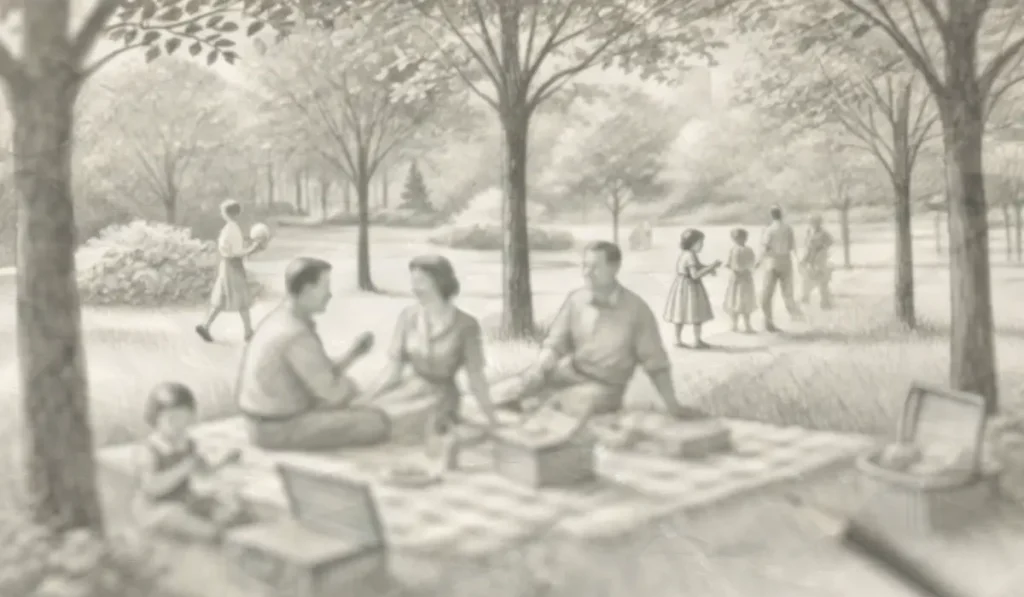
Guide: Choose one adult sitting on the picnic mat as the hero. Show how the hero planned the outing to strengthen family bonding and ensure everyone enjoyed quality time outdoors. Highlight planning, responsibility, and creating a cheerful atmosphere. End with a happy and memorable experience.
Sample Story: Rahul, a 35-year-old office professional, noticed his family members becoming distant due to everyone’s busy schedules. To bring them closer, he planned a weekend picnic in a nearby park, arranging food, games, and inviting relatives. On the picnic day, he guided everyone to a nice shady spot, set up the mat, and organized activities for kids and elders alike. He encouraged conversations, laughter, and group games, ensuring everyone participated and enjoyed. By the end of the day, the family felt refreshed and connected, and Rahul’s thoughtful effort to create a joyful experience left everyone grateful and closer than before.
PPDT Pictures 6
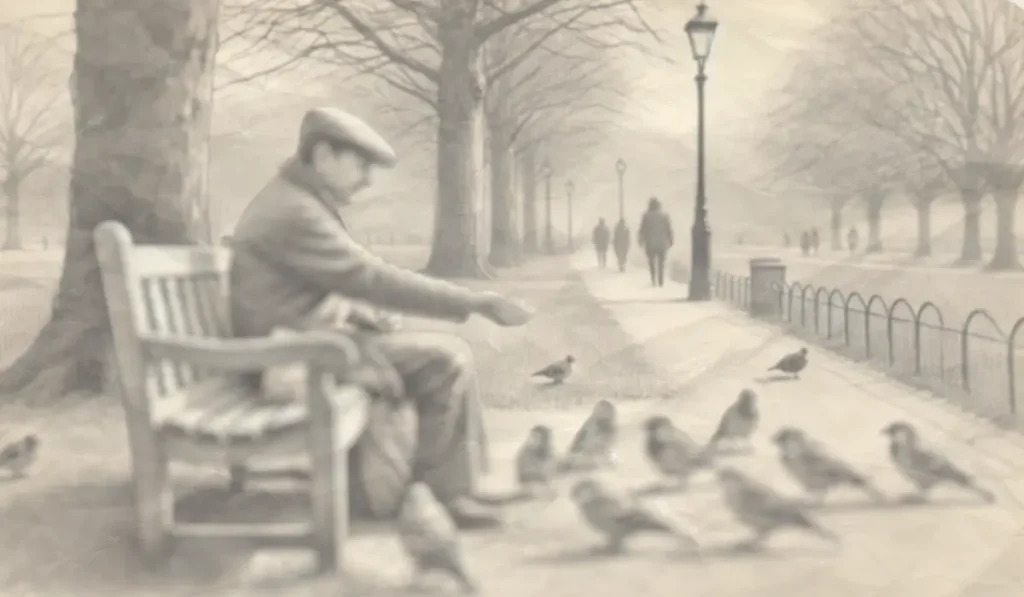
Guide: Choose the man feeding birds as the hero. Show his appreciation for nature, kindness towards animals, and how he promotes harmony and mindfulness in his daily life. Highlight compassion, awareness, and positivity. End with a sense of peace and fulfillment.
Sample Story: Vikram, a 45-year-old school teacher, made it a habit to visit the nearby park every morning after his walk. He carried some grains and sat quietly on a bench feeding the birds that flocked around him. Over time, he observed that his small act not only brought joy to the birds but also created a peaceful and mindful start to his own day. People walking by often stopped to watch him and felt inspired to connect more with nature. His simple gesture of kindness reminded everyone of the importance of coexisting with other living beings and spreading positivity around.
PPDT Pictures 7
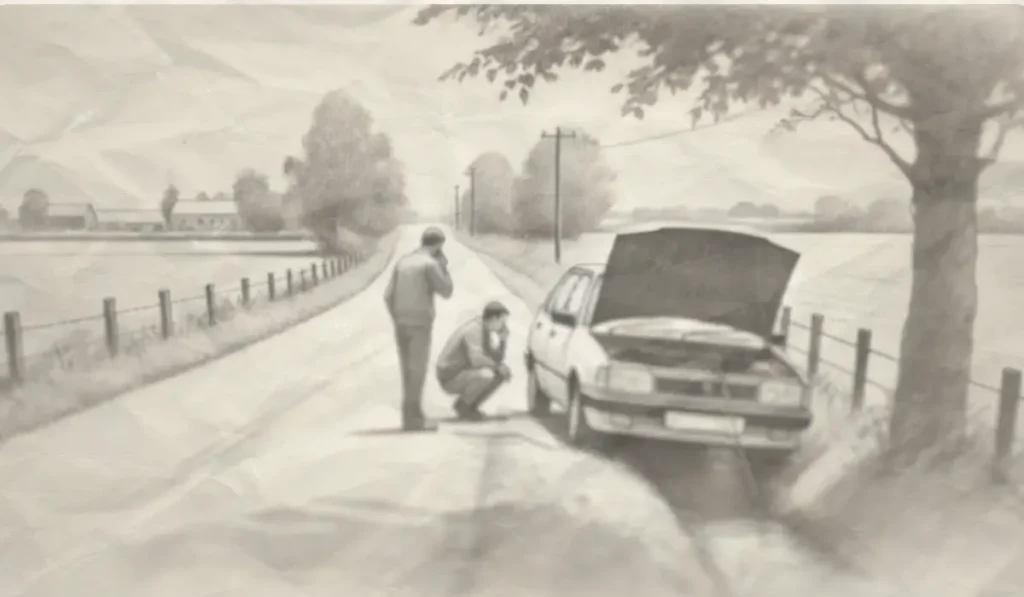
Guide: Choose one of the men inspecting the car as the hero. Show his quick thinking and teamwork in resolving a roadside car breakdown calmly. Highlight problem-solving, presence of mind, and responsibility. End with a positive and practical solution.
Sample Story: Ramesh, a 28-year-old sales executive, was on a rural highway with his colleague when their car suddenly broke down. While his colleague worried about being late for their meeting, Ramesh stayed calm, opened the bonnet, and checked the engine to identify the issue. Realizing it was a loose battery connection, he tightened it with the tools from the car kit they always kept handy. He also called a nearby mechanic to double-check and ensure the car was safe to continue. Thanks to his presence of mind and preparedness, they managed to resume their journey with minimal delay and even reached their meeting on time.
PPDT Pictures 8
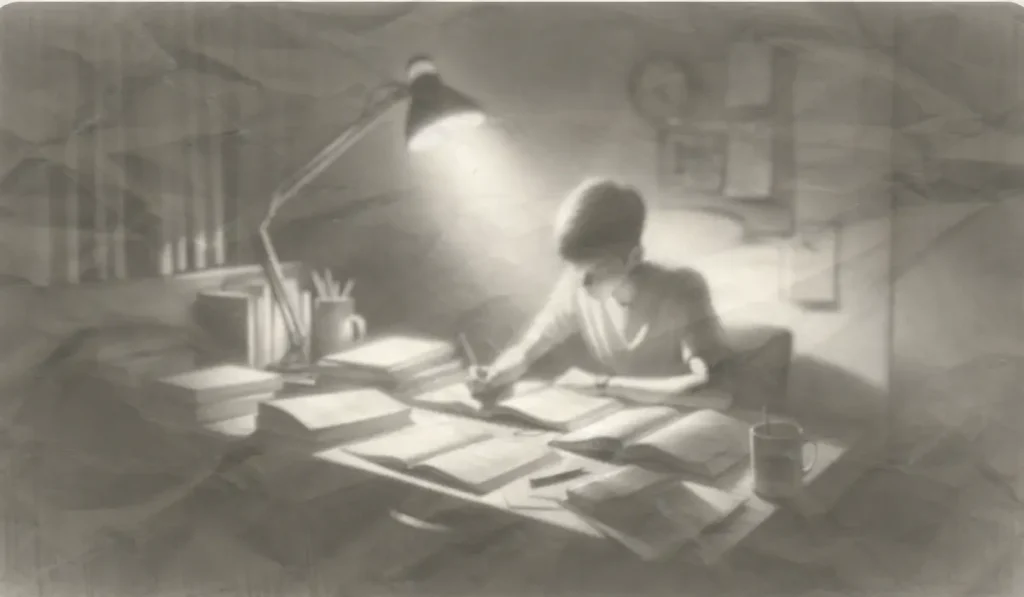
Guide: Choose the student at the desk as the hero. Show his dedication and focus while preparing for an important exam or goal. Highlight discipline, perseverance, and a clear plan of action. End with a positive and motivating outcome.
Sample Story: Aman, a 20-year-old college student, was determined to crack a competitive exam to secure his dream job. Every night, after attending college and managing part-time work, he sat at his desk late into the night, meticulously planning and covering topics from his syllabus. He maintained a strict timetable, took short breaks to stay refreshed, and kept himself motivated by reading success stories. After months of consistent effort and self-discipline, he cleared the exam with flying colors and inspired his peers with his determination. His story proved that hard work and dedication can overcome any challenge.
PPDT Pictures 9
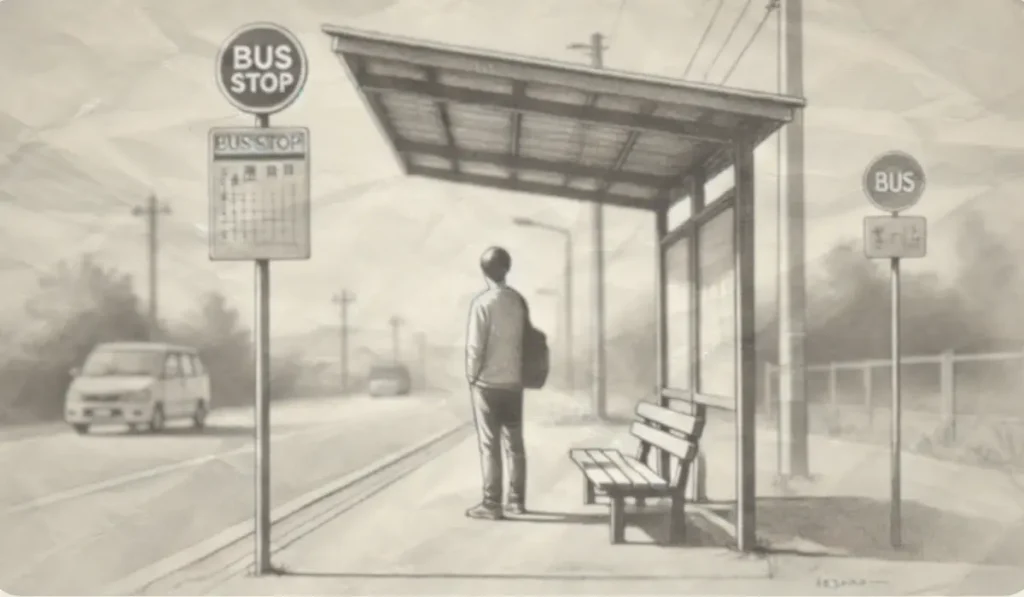
Guide: Choose the man waiting at the bus stop as the hero. Show how he manages his time efficiently, plans his travel responsibly, and uses waiting time productively. Highlight punctuality, patience, and planning. End with a positive, calm outcome.
Sample Story: Kunal, a 25-year-old software engineer, was waiting at the bus stop early in the morning to reach his office on time. He preferred using public transport to save fuel and reduce pollution. While waiting, he quickly reviewed the tasks for the day on his phone and made a to-do list. This habit of planning during his commute helped him stay organized and reduced stress at work. When the bus arrived, he boarded with a sense of readiness and confidence, starting his day positively. His discipline and effective use of time became an inspiration for his colleagues.
PPDT Pictures 10
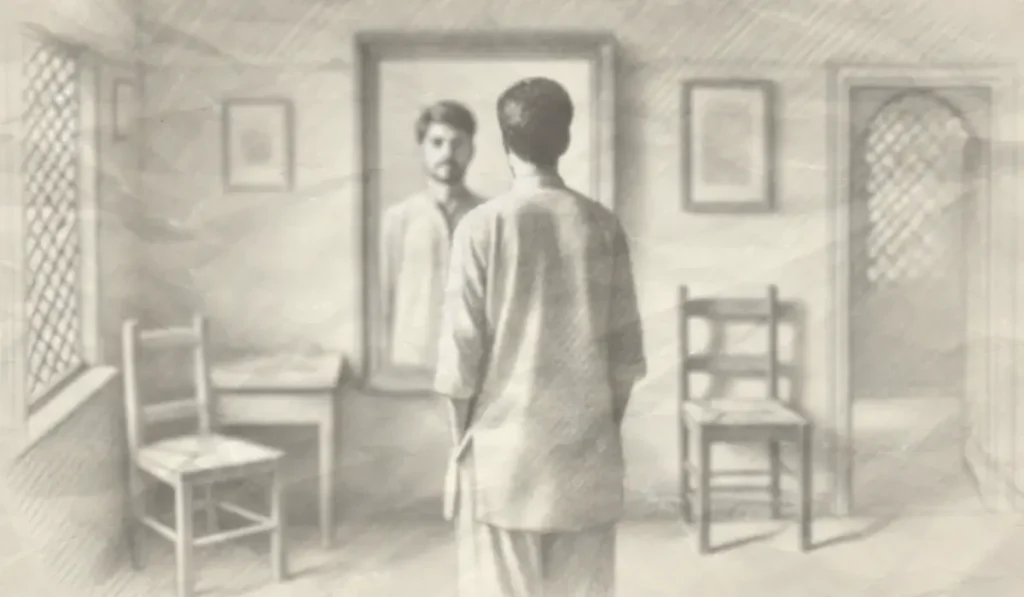
Guide: Choose the man looking in the mirror as the hero. Show his self-reflection, determination to improve himself, and resolve to take positive steps toward his goals. Highlight introspection, motivation, and personal growth. End with a confident and purposeful outlook.
Sample Story: Arjun, a 27-year-old aspiring entrepreneur, stood in front of the mirror one morning reflecting on his life. He realized he had been procrastinating on his dream project for too long. Determined to change, he wrote down his plan of action, set achievable milestones, and promised himself to work consistently each day. This moment of honest self-assessment gave him clarity and renewed energy to pursue his goals. Over the months, his perseverance paid off, and he successfully launched his business, proving that change begins with self-belief and taking responsibility for one’s own journey.
PPDT Pictures 11
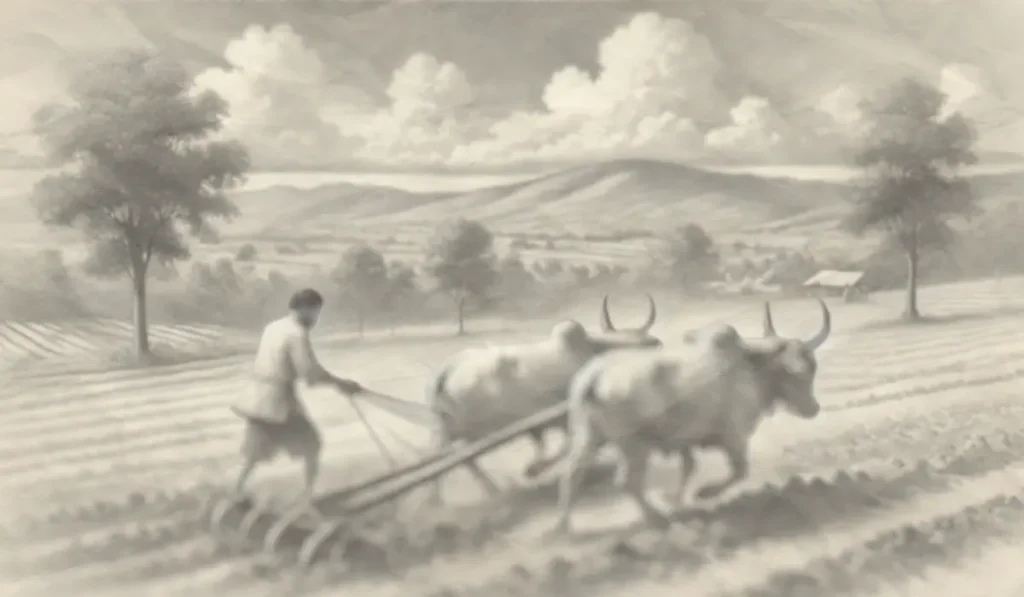
Guide: Choose the farmer ploughing the field as the hero. Show his hard work and optimism while preparing his land for a good harvest. Highlight dedication, connection to nature, and perseverance. End with hope and satisfaction.
Sample Story: Ram Singh, a 40-year-old farmer, woke up early to begin ploughing his fields before the sun rose high. With his pair of oxen, he worked tirelessly under the open sky, preparing the soil for sowing seeds in the upcoming season. Despite challenges like uncertain weather and limited resources, he maintained his faith in his hard work and in nature’s blessings. His positive attitude motivated his fellow villagers to put in similar effort for their crops. Weeks later, his field bloomed with healthy plants, and his family enjoyed the fruits of his dedication and perseverance.
PPDT Pictures 12
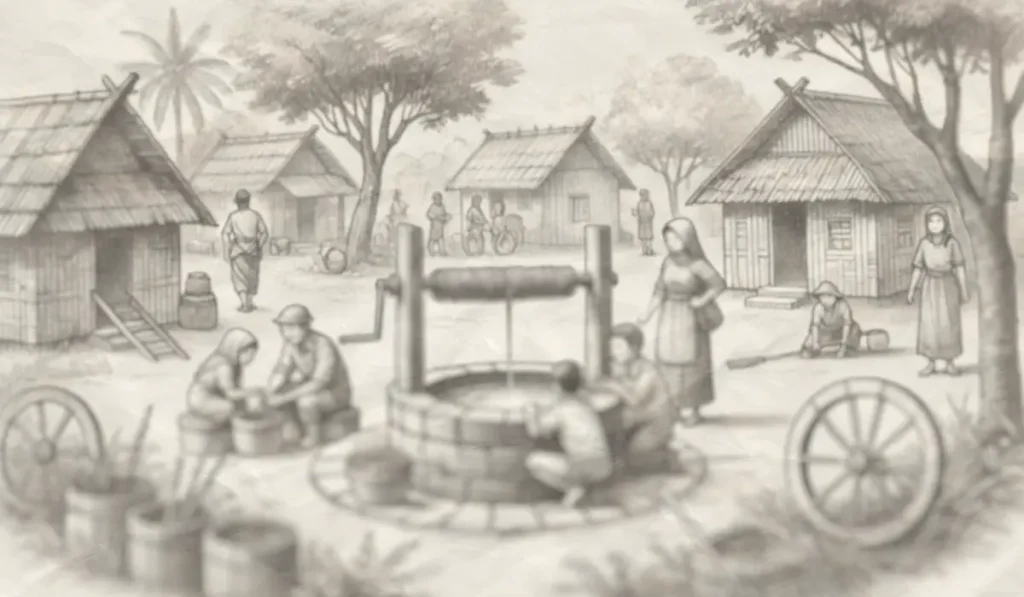
Guide: Choose one of the villagers near the well as the hero. Show how the hero contributes to improving the village’s hygiene, cooperation, and daily life through teamwork and awareness. Highlight community spirit, responsibility, and problem-solving. End with a positive impact on the whole village.
Sample Story: Shyam, a 32-year-old villager, took the initiative to improve cleanliness and water usage in his village. He gathered neighbors near the common well and explained how keeping the area clean and organized would benefit everyone’s health. Together, they cleaned the surroundings, set up a proper queue system at the well, and even planned for a water tank installation with the panchayat’s help. Their efforts inspired other villagers to take similar steps for hygiene and cooperation. Soon, the entire village became an example of unity and progress, and Shyam’s leadership earned everyone’s respect.
PPDT Pictures 13
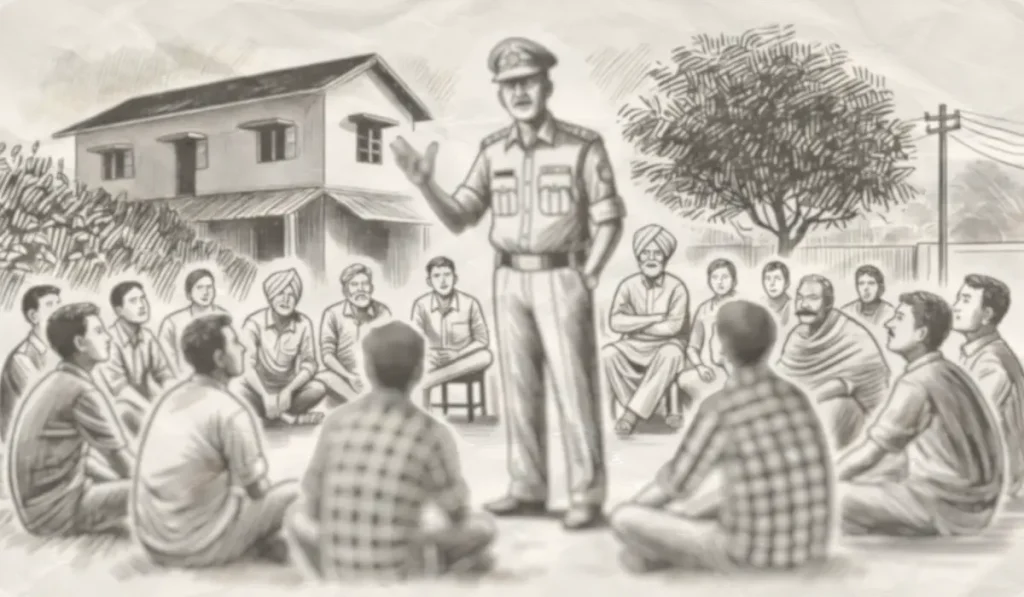
Guide: Choose the police officer addressing the crowd as the hero. Show his leadership in spreading awareness and ensuring law & order through effective communication. Highlight responsibility, public service, and initiative. End with a positive and cooperative outcome.
Sample Story: Inspector Arvind, a 38-year-old police officer, organized a community meeting in a village to address rising concerns about thefts and disputes. Standing in front of the villagers, he explained the importance of vigilance, mutual trust, and timely reporting of suspicious activities. He also shared helpline numbers, distributed pamphlets, and assured quick police response to emergencies. His respectful tone and practical advice encouraged villagers to cooperate actively with the police. The initiative strengthened trust between the police and the public, resulting in improved security and harmony in the area.
PPDT Pictures 14
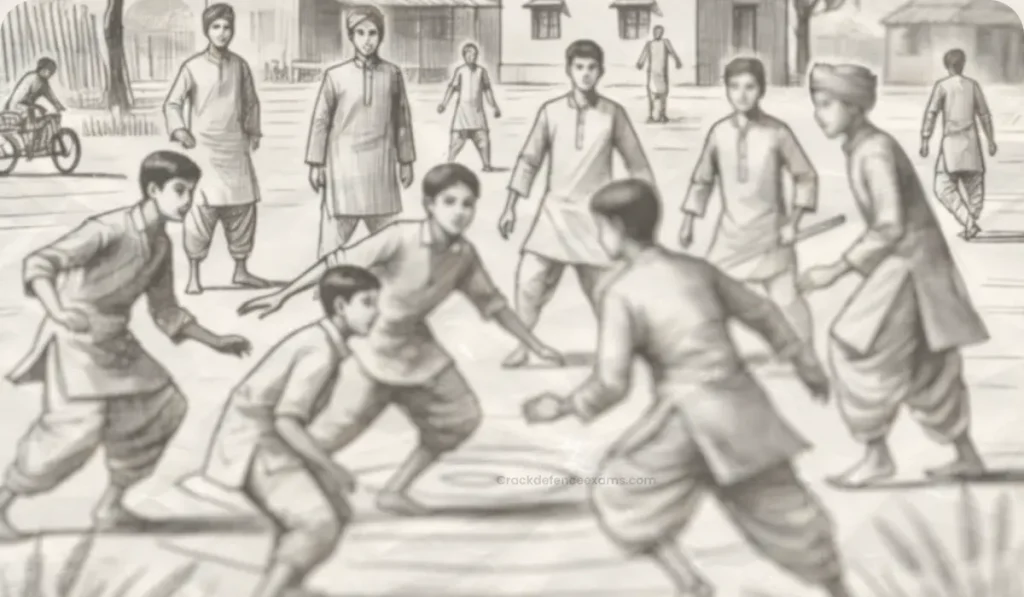
Guide: Choose one of the boys actively playing as the hero. Show his leadership and sportsmanship while engaging in a traditional village game. Highlight teamwork, enthusiasm, and fair play. End with a joyful and learning experience for all.
Sample Story: Amit, a 14-year-old schoolboy, organized a friendly kabaddi match in his village to bring kids together during their vacation. He divided the teams fairly, explained the rules to ensure everyone understood, and encouraged his teammates to play with energy and coordination. During the game, he motivated the shy players to participate confidently and reminded everyone to play safely. His cheerful spirit and sense of fairness made the game exciting and enjoyable for all. After the match, the boys bonded even better, and Amit was praised for his initiative and team spirit.
PPDT Pictures 15
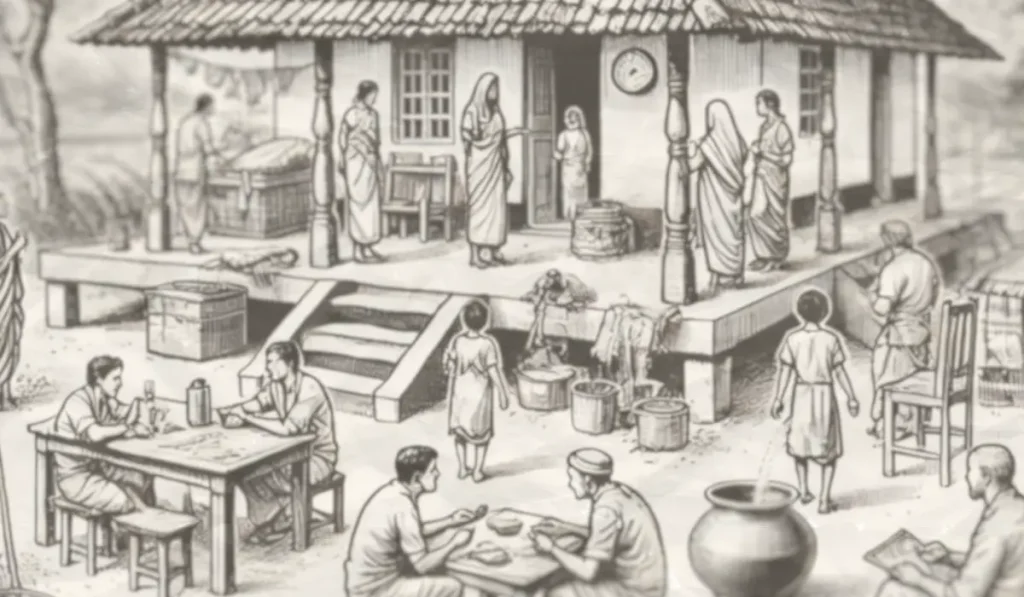
Guide: Choose one of the women near the house as the hero. Show her organizing household work, guiding others, and ensuring harmony in the family. Highlight management skills, care for family, and responsibility. End with a positive and well-coordinated home environment.
Sample Story: Savitri, a 35-year-old homemaker, started her morning early to manage the busy household. She divided tasks among family members — some cleaned, others cooked, while she herself attended to guests arriving for breakfast. She ensured everyone ate on time and even guided the children to help with small chores, teaching them teamwork. Her calm and organized approach kept the atmosphere cheerful, and visitors admired the family’s unity and hospitality. Savitri’s ability to manage everything gracefully made her the pillar of the household, inspiring others in the neighborhood.
(Disclaimer: The sample guides and stories shared in this blog are designed purely for practice and learning purposes. Please note that the PPDT (Picture Perception and Discussion Test) images used in the actual SSB interviews are intentionally hazy, blurred, and ambiguous. The clear images and detailed stories here are only to help you understand the right approach and structure for writing. Candidates are advised to practice with morphed and unclear images as well to simulate real exam conditions.)
Start your journey to success with our expert-guided SSB Coaching today.

